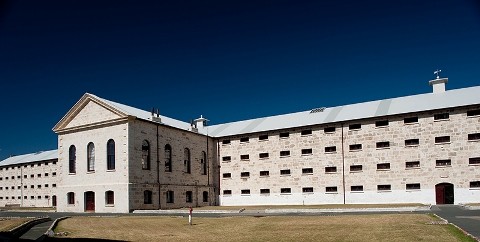Perth architect Philip Griffiths was recently awarded the Board Award from the Architects Board of Western Australia.
 Griffiths is director at Griffiths Architects and specialises in heritage architecture in Australia and overseas.
Griffiths is director at Griffiths Architects and specialises in heritage architecture in Australia and overseas.
Architecture & Design spoke to him about why heritage architecture is important, working on the only World Heritage cultural site in WA and what the Board Award means to him.
What has been your favourite heritage project to work on?
I think working of Fremantle Prison has been the most rewarding work. There is a good resource available to practice heritage as it should be. It's a World Heritage site and needs to be treated in accordance with accepted conservation principles. Sometimes the value of the research is as great, if not greater, than the capital value of the conservation and construction work and it is fully justified on a place like this.
 Fremantle Prison
Fremantle Prison
Can you tell us something about your experience working on the Fremantle Prison, the only World Heritage cultural site in WA?
Although it is well documented, it's a great surprise when things that have been concealed for many years are still there and have been covered by a slab of concrete. Last year we uncovered an underground larder that was indicated on plans but which we thought may have been destroyed. These discoveries are revealed for people to enjoy as part of individual projects. It makes their experience more complex so it's rewarding for us to be able to make visits more filled with meaning and information about the past.
Why is heritage architecture so important to you?
Being involved in heritage architecture was a happy accident for me. I fell into it through my practice in London. Returning to Perth, the string of coincidences continued and I ended up specialising. As time has gone on, I have re-thought the subject, been more excited by it and enjoyed what it has brought to my experience.
One of the very great pleasures is getting to see places that many people never get to see. So now it’s important professionally and socially and I think that what we do adds to the richness of people's lives. It may not be the most important thing to do, but looking after our heritage is a great privilege and contributes to our understanding of who we are and what our roots are.
When and how did your interest in heritage architecture begin?
While I loved architectural history as a student, my interest was more contextual and theoretical at that stage. Having to deal with heritage places led to an understanding and a string of coincidences led to a sustained interest. Travel throughout Europe also helped to develop an understanding. Finally, I was able to see some good conservation and adaptation work which indicated what was possible and that peaked my interest.
You received your diploma of architecture in London. How do the English deal with their heritage buildings differently to Australia?
I think that protection of heritage is well understood in the UK, but that we have put more rigour into general heritage practice. The Australian ICOMOS Burra Charter is a conservation tool which is widely used and recognised internationally. Most of our practitioners are using it now and this established some very sound principles that guide our practice. Where there is still some quaint thinking in UK practice, I think we have adopted good methods that are robust and guide us towards high standard conservation outcomes.
What does the Board Award mean to you?
I am very happy to have received the Board's award. I had no idea it was coming, but was aware that I had been nominated some time ago. I think that recognition by a peer group is always heart warming. It makes one appreciate that it's not just screaming in space and that peers have taken a moment to reflect on a body of work. I thank whoever made the nomination and the Board for thinking it was a good idea.

